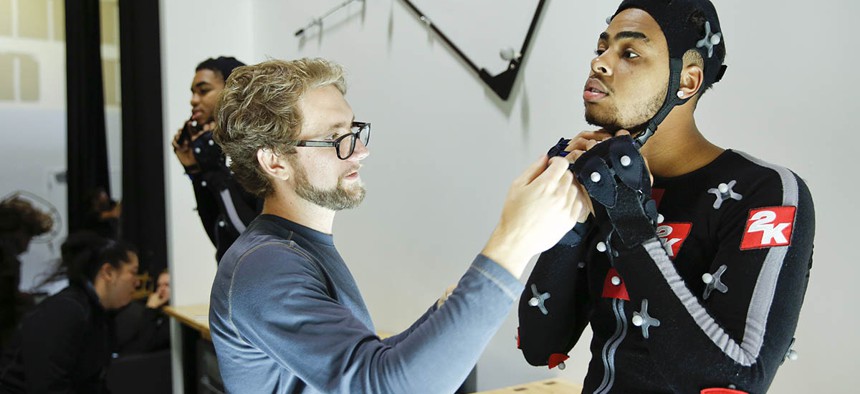NIH Seeks Advances in Motion Capture Tech

NBA player D'Angelo Russell suits up in motion capture suit at the 2K Mocap Studio in Petaluma, Calif. Alison Yin/AP
A National Institutes of Health lab needs a new motion capture system but first wants to know how new it should be.
An integral part of the research technology used by National Institutes of Health’s Functional and Applied Biomechanics wing is nearing its end-of-life and researchers want to replace it before “bigger problems arise.”
NIH scientists purchased a 10-camera motion capture system from Vicon Motion Systems in 2009 that has since been woven into all but one of the section’s internal systems.
“The motion capture system is central to all of FAB's internal and most of our support research protocols, and is the primary reason other institutes and departments refer clinical patients to our lab,” researchers said in a presolicitation notice on FedBizOpps Monday. “The motion capture system is integrated with other hardware and software such as force plates, treadmill, [electromyography], virtual reality and custom software for real-time control and feedback.”
But the system is aging, and as it nears 10 years old, “there have been some small issues, and we hope to replace the system now before bigger problems arise.” The presolicitation notice also notes the technology has evolved significantly over the last decade.
Taking all this into account, NIH procurement officials issued the notice asking for industry feedback on the latest motion capture technology. NIH is not yet looking for bids, however the responses will be used to determine whether to open the procurement for competitive bids.
The future contract would include a one-year base period, with four optional one-year add-ons.
Responses are due by Sept. 20.



